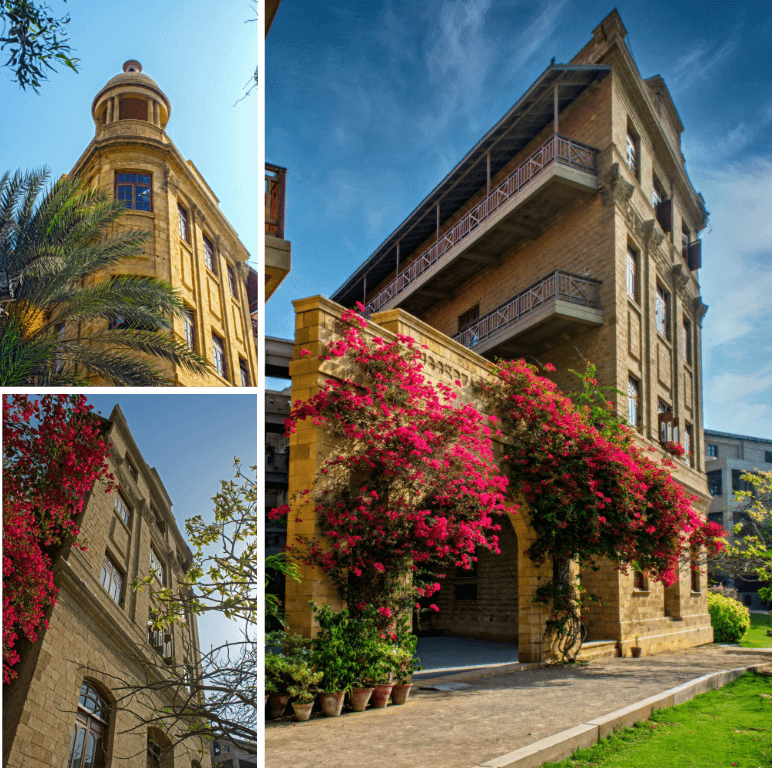Rushmeen Khan
Thesis Title:
Real and Imagined Identity: The Performative as an Urban Signature
Project Title:
The People’s Square
Location:
Shahrah-e-Kemal Ataturk, Saddar Burns Road, Karachi
User Group:
Students, Residents, Vendors, Immediate Neighborhood, City
In a neoliberal world where visuals are more important than content, the apparent aesthetic of a city determines its status as a ‘World Class City.’ The desire to appear ‘ideal’ creates a split in the reflection of identity: what is real and what is desired and imagined. The desired identity consists of a pedagogical narrative imposed on a city by those in power, focusing on the static elements of the urban fabric: built landmarks, icons and images, in which identity is limited to the surface; an inflexible, homogenizing framework. This is embodied in the current design of the People’s Square. This thesis aims to instead bring to the fore the people as agents of a process of national signification rendering the homogenising intent of the pedagogical narrative inappropriate and unrealizable; thus highlighting these performative temporalities as the real urban identity.


Rushmeen Khan
Architecture
Thesis Title:
Real and Imagined Identity: The Performative as an Urban Signature
Project Title:
The People’s Square
Location:
Shahrah-e-Kemal Ataturk, Saddar Burns Road, Karachi
User Group:
Students, Residents, Vendors, Immediate Neighborhood, City
In a neoliberal world where visuals are more important than content, the apparent aesthetic of a city determines its status as a ‘World Class City.’ The desire to appear ‘ideal’ creates a split in the reflection of identity: what is real and what is desired and imagined. The desired identity consists of a pedagogical narrative imposed on a city by those in power, focusing on the static elements of the urban fabric: built landmarks, icons and images, in which identity is limited to the surface; an inflexible, homogenizing framework. This is embodied in the current design of the People’s Square. This thesis aims to instead bring to the fore the people as agents of a process of national signification rendering the homogenising intent of the pedagogical narrative inappropriate and unrealizable; thus highlighting these performative temporalities as the real urban identity.
The square is firmly entrenched in the surrounding context, functioning at three scales: the immediate context, the surrounding neighborhood, and the urban level - all of Karachi. The plan is based on circulation patterns derived from performative patterns on and around the square.
The main node is where all those passing through or using the square come together; the main orienting element which is characterized by a fountain and resting space. It is sufficiently tucked in the site so that noise levels from surrounding roads drop significantly and a restful environment is created.
The Bin Qasim food street is continued through the square and connects to the road on the other end; with more flexible commercial spaces, allowing the space to develop into a food street, a clothes market, or a utility market depending on time of the year or choice of the people/vendors.
It can also simultaneously function as all of the above, modelled on the nature of other Saddar markets such as Bohri Bazar and Empress Market.
The site had a 200 year old library and a geological museum open to the public; with a spectacular classical facade, which was opened up and lawns, a turtle pond and a rock garden was created to create pleasant pause spaces for the public.
The cafe serves as not only the only formal eatery in the square itself, attracting students from all surrounding universities, but also an attraction for the surrounding neighborhood; it being functional from morning to night makes it a social hub on a larger scale.
The amphitheater brings together all user groups, allowing student theatre, cricket match/film screenings, exhibition screenings, and seminars.
The spillover ensures that capacity is not only limited to the formal capacity of the amphitheatre, thus expanding and contracting depending on performative context.
The courtyard at SM Arts is in an axial relationship with the amphitheatre and screen, thus allowing spillovers to extend to the edge of the site.
The entrance to the heritage Burnes Garden doubles up as an exhibition space and gallery, right next to the amphitheater.
The Burnes Garden hosts city-wide festivals such as Karachi Eat, Coke Fest, Flower shows, etc, bringing people from all backgrounds to the Peoples Square.
Steel and canvas is used throughout the scheme, in different ways, the uniformity of material coupled with the diversity of programs hosted implies how architecture itself is not the star in the reflection of identity, rather it creates the stage on which identity is displayed and performed.
The People’s Square comes together as a performance, in which every Karachiite has a role to play; and this relevance to all is what makes it an urban signature.



















